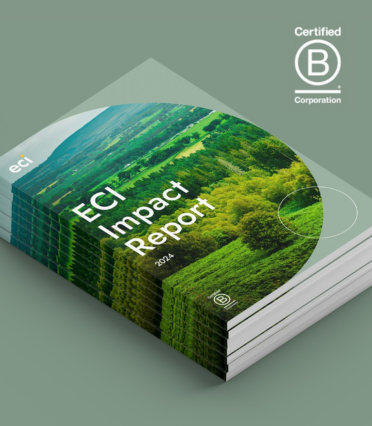As part of our ECI Unlocked programme connecting business leaders across the ECI portfolio, we recently welcomed leading technology recruitment agency, Burns Sheehan, to share best practice around how to hire tech talent in the competitive 2022 landscape.
With low unemployment and the potential impact of Brexit, the hiring market is definitely hot right now, but the war for talent is certainly strongest in tech. The likes of Apple and Facebook are growing rapidly, with Facebook currently planning to hire 10,000 people in Europe to build the metaverse. That war for engineering talent has led up Apple paying bonuses of up to $180,000 (£133,000) as it tries to fight off rivals.
For mid-market firms trying to hire, these are the behemoths you are competing with. Whilst there is no silver bullet, there are lots of things you can do to optimise your chances of success. We pick out our top five:
1. Offering the job is only the start
We’re seeing increased numbers of counteroffers and as the pace of salary growth is so rapid now, there is more chance that candidates might have their head turned by a large sum or financial incentive. Frequently once a company has an offer accepted, there is a great sense of relief, and the foot can come off the gas. You should maintain dialogue throughout the recruitment and notice period and continue selling right up until the candidate starts. Create an onboarding process that starts from verbal acceptance to minimise dropouts during notice periods.
And even then, that is just the start. You need to keep selling to your own people as well. Attracting talent starts with retention, so consider whether you have the right systems for employee feedback and regular pulse checks. Are all your employees being equally supported and are there policies driving your D&I strategy?
With the current market meaning people are much more likely to get headhunted by rivals, if you want to keep your talent you need to consider how competitive their salary is, and make sure that individuals know the impact they can have and their progression path. Don’t wait until it’s too late to do that and have those conversations, take the front foot instead.
2. Understand what benefits people are really after
Do candidates want flexi-working or do they look for the office feel? Do they think more about bonuses or annual leave? How important is learning and development to them?


Burns Sheehan’s 2022 Tech Hiring & Market Insights Report highlighted some clear trends, with 97% of its tech community looking for some degree of flexibility whether it be flexible hours, being fully remote, or a work where it works mindset. Similarly, equity/share options and learning and development were important benefits. However, it also highlighted that having a one size fits all approach is unlikely to work. As part of the roundtable, portfolio leaders discussed how equity for example may be well and good but if someone is looking to buy a house they can’t pay a mortgage with it, so you may need to have those conversations and balance what works with the individual’s situation.
The group also discussed the importance of bringing benefits to life – for example at Tusker, they have every second Friday for learning and development as they’ve recognised it only really happens if the whole team commit to it. That is much easier to sell in an interview, than saying you’re ‘committed to learning and development’, which candidates hear everywhere.
Burns Sheehan stressed that if you were to focus on one area, career progression (or lack thereof) is the one thing candidates are really looking for. People want to understand their purpose and impact within the business and see that they will be doing more than just executing.
3. You are selling, not searching
Job specs of yesteryear may have been all around necessary experience and requirements for the role, but nowadays your job spec is as much about what you’re offering as what you’re needing. This may be the first opportunity to sell your company to this candidate, so get your employee value proposition right to the forefront. If you’re not able to compete on salaries, what do you offer that your competitors don’t? Examples might be innovative working policies, market leading learning and development resources, or the purpose behind the organisation.
In this way, you should think about marketing to your candidates just as you do with your customers. Burns Sheehan highlighted some great examples they had seen such as companies hosting events or writing their own employee blogs. Increasingly job specs have infographics or embedded videos discussing why your company is a great place to work. Potential employees should be keen as a key target audience for your business, with marketing and HR teams working closely together to devise an effective selling strategy.
That also means streamlining the recruitment and interview process. Many companies lose out due to slow processes, inflexibility or complex tests that may not give people the opportunity to best showcase their talent.
4. People buy into people
Your people are the best possible advertisement for your company. As anyone who has been part of a recruitment process knows, it can be hard to really get under the skin of a company and understand what it’s like to work there and what the culture really looks like. If you can bring that to light with people sharing stories about why they joined and how it’s been, that will be hugely valuable. Get your founders and leaders to host podcasts or events to talk through that journey, and to be open and honest about the challenges and how they solved them so that insight into the culture is real and not salesy.
Bringing the business to life this way also gives candidates access to more people that they might not meet during the interview process. Getting your team involved in initiatives such as mentoring opportunities, spotlight blogs, speaking at events, or offering up your office up as hosting space, is a great way to showcase your company, both to those actively looking and passive candidates who may remember you in the future.
5. Use tools to manage the process effectively
As the hiring market becomes more competitive it also becomes more complex – reaching more candidates, staying in touch with them, following up quickly and having a streamlined process will be critical to your success rate.
For candidate recruitment, some tools that were suggested across the portfolio included Hired or Cord, where you can engage with people exclusively in tech and looking for work. Applicant tracking systems such as Workable were deemed important to track applicants effectively throughout the process and to track and drive internal referrals. And as the market is so hot, it is also a useful tool for re-engaging with clients met previously, those who might not have been right for one role but may be right for another, or even someone who you lost but who could be induced to come back to the market in a year.
For further insights see Burns Sheehan’s 2022 Tech Hiring & Market Insights Report or get in touch with one of the team directly.



